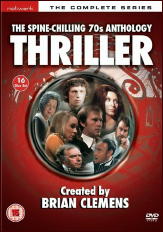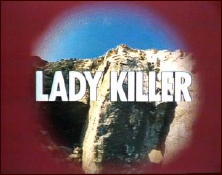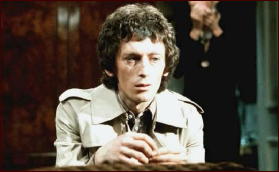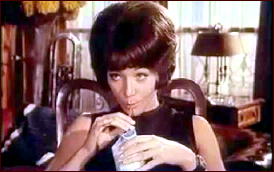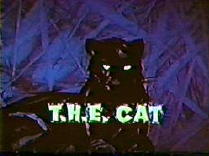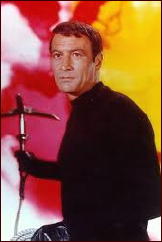Tue 10 Feb 2015
A Western Fiction Review by David Vineyard: CLARENCE E. MULFORD – The Coming of Cassidy.
Posted by Steve under Reviews , Western Fiction[16] Comments
CLARENCE E. MULFORD – The Coming of Cassidy. A. C. McClurg & Co., hardcover, 1913. Reprinted several times, including Tor, paperback, 1993. Also included in Wild Western Days: The Coming of Cassidy, Bar-20, Hopalong Cassidy, Forge hardcover, 2010. Also available online.
When asked what he thought of the huge Hopalong Cassidy revival of the late forties and early fifties that made Bill Boyd a superstar and millionaire, Clarence E. Mulford, who created the character and made no little money from Boyd’s popularity was purported to say: “He has his Hopalong, and I have mine.â€
It’s an accurate statement because Bill Cassidy the top hand of the Bar 20 has little in common with Bill Boyd’s avuncular paragon of virtues. Mulford’s Cassidy can drink any man under the table, has — to say the least — a colorful vocabulary, is deadly fast and doesn’t bother to shoot guns out of anyone’s hand, smokes, gambles, brawls, and has an eye for the ladies. He’s a tall lanky cowboy that looks more like John Dierkes Rafe in Shane than Bill Boyd’s immaculate man on the white horse.
This is from The Coming of Cassidy, a collection of integrated short stories, some merely vignettes. telling how young Bill Cassidy came to Buck Peters’ Bar 20 and became the leader of the Bar-20 Three, with Red Connors and young Johnny Nelson.
Bill Cassidy is a lanky young man who started riding north and arrives at Buck Peters’ ranch just as the ranchman is having trouble with a group of buffalo hunters. It’s not long before Cassidy is butting heads with one of them.
Mulford’s stories may be dated by today’s standards, but in many ways his easy style and classic approach to the Western makes him a more modern read than Max Brand or Zane Gray. It’s not that you will find anything unsavory about Hoppy and his crew, but you get the impression they have skirted close to unsavory in their past. Mulford never says it, but he knows those knights of the saddle were actually homeless virtual bums who often owned nothing of their own but their boots and spurs — certainly not a horse, gun, and saddle.
Many a real cowboy worked for a horse and a saddle and little pay.
This collection includes the story “How Hopalong Got His Hop†that explains how he got his famous name and the limp that dogs him throughout the books. Ironically Bill Boyd and the production company of the first Hopalong Cassidy film had no intention to utilize Hoppy’s limp, but Bill Boyd broke his leg early in the production.
And thus was born a nickname that found honor and fame in the cow-country a name that stood for loyalty, courage and most amazing gun-play. I have Red’s word for this, and the endorsement of those who knew him at the time. And from this on, up to the time he died, and after, we will forsake “Bill” and speak of him as Hopalong Cassidy, a cowpuncher who lived and worked in the days when the West was wild and rough and lawless; and who, like others, through the medium of the only court at hand, Judge Colt, enforced justice as he believed it should be enforced.
Reading these stories and the other books in the series it’s easy to see why the first choice to play Hoppy on screen was grizzled character actor James Gleason and not handsome Bill Boyd. Over the course of the films Hoppy changes partners a few times but remains the same kindly tough respectable man about the ranch, but Mulford’s Hoppy ages, drinks too much, gambles, and even gets married. At times he almost becomes respectable, much to his chagrin.
In one story he even gets shanghaied, and he and the boys have to start a mutiny.
Mulford stayed true to his creation even when his readers wanted the Bill Boyd version. It may have been Boyd on the book covers later, but the man inside was Bill Cassidy. Louis L’Amour, who wrote the Hopalong Cassidy short lived pulp magazine as Tex Burns, was caught between the two, but reading his books you can see it was Mulford’s Hoppy he preferred. His Hoppy looked more like Bill Boyd but it only went skin deep. (*)
Somehow I can’t see Bill Boyd’s Hoppy leading the pretty girl on without telling her she has the wrong man, but Mulford’s Hoppy does without turning a hair.
The books move quickly. Hoppy and his pals can’t stay out of trouble for more than a few paragraphs, if that. Gunsmoke curls in the air; keen eyed men stare across tables at each other and glance anxiously at five cards in their hand that could mean fortune, or death; cowboy’s slump in the saddle eyes staring into the darkness as they listen to the lowering cattle; horses throw them; rough humor dogs them; hand-mades hang from lean dry lips lighted by a lucifer; chaws of tobacco are spit with terrifying accuracy; men die; women weep; outlaws, Indians, gun men, crooked towns people, lynch mobs, buffalo hunters, skinners, stage coach drivers, whisky drummers, renegades, school marms, saloon girls, diamond-backs, mustangs, and longhorns, all the pantheon of the old west cross their path.
This is Ur-text, cowboy style. The age of Remington is not that far in the past. Charles Russell is still writing and painting. It has not been that long since Owen Wister’s The Virginian or Emerson Hough’s The Covered Wagon. Names like Jesse James, Billy the Kid, Buffalo Bill, Wild Bill, Butch Cassidy, are not that distant a memories. Zane Gray, Eugene Manlove Rhodes, and Max Brand are his contemporaries. Tom Mix, William S. Hart, Harry Carey, Bronco Billy Anderson, Buck Jones, Colonel Tim McCoy, and a young unknown named Gary Cooper ride across the for now silent screen waiting for him to join him even he is unrecognizable when he does.
It is to his credit that Mulford’s Hoppy has survived and not just Bill Boyd’s. His books can still be found on paperback racks and not so many years back a film, The Gunfighter, featured Martin Sheen as the older Hoppy, and one much closer to Mulford than Boyd.
Bill Boyd’s Hoppy will always have a hold on my heart, but in a real way Mulford’s creation is timeless as the film Hoppy is not. Boyd’s Hoppy seems a bit quaint now, not quite real, a little too perfect, he rides and lives in a West that never was, but Mulford’s Hoppy, swearing, spitting, guns blazing, cards held close to the vest, eyes squinted beneath his sombrero, a top his horse Ring-Eye, has a feel of authenticity. We know the West wasn’t like Boyd’s, but if it wasn’t like Mulford’s (and it wasn’t really) it should have been.
(*) It was the revival of L’Amour’s Hoppy novels, especially The Rustlers of West Fork, that inspired Tor Forge to revive Mulford’s Hoppy in modern paperback form. As for the true face of Hoppy, you’ll find it among the illustrations the giant of modern American illustration N.C. Wyeth did for Hoppy’s magazine appearances, but I warn you, Bill Boyd it is not.
On a similar note, while Bill Boyd is known for dressing in black that is an illusion of black and white film. Boyd is actually wearing a red shirt, yellow kerchief, and blue jeans in the early films. Only the hat and the boots were black. You just can’t tell on film. Later on the outfit conformed to the image and the comic book version, but early on he’s dressed almost as colorfully as Mulford’s Hoppy.
